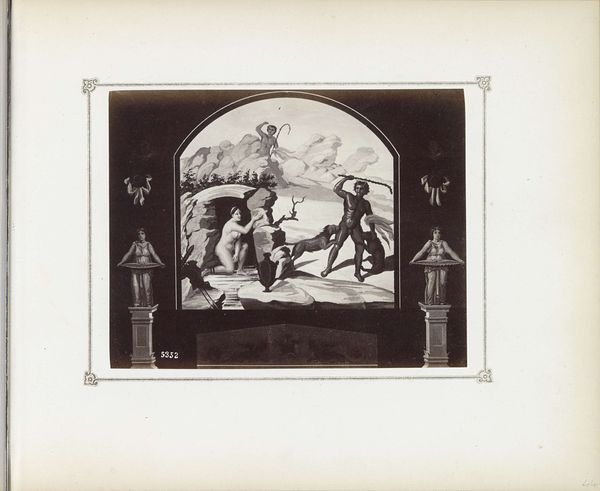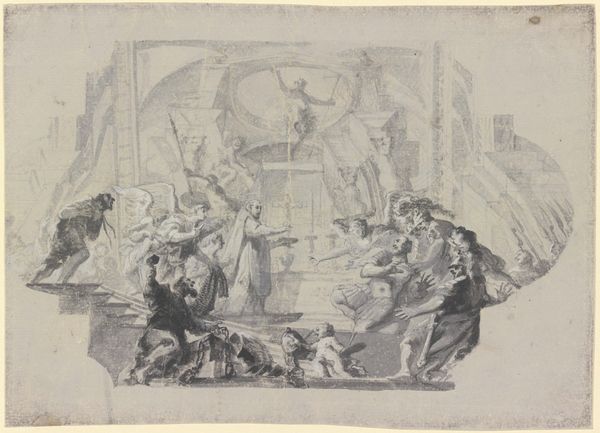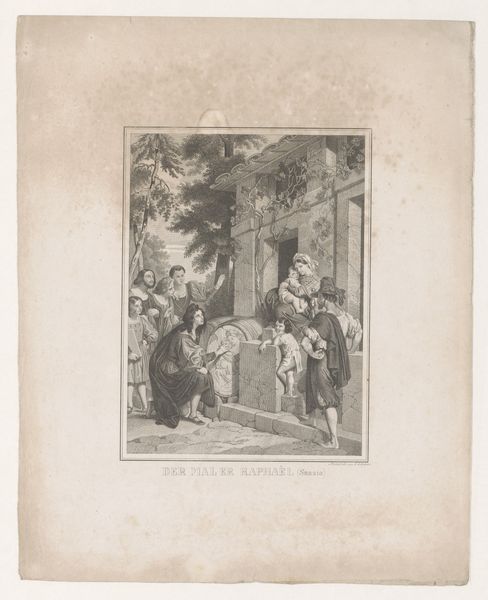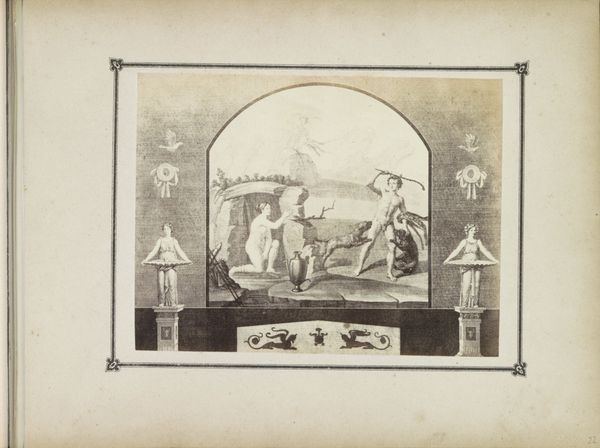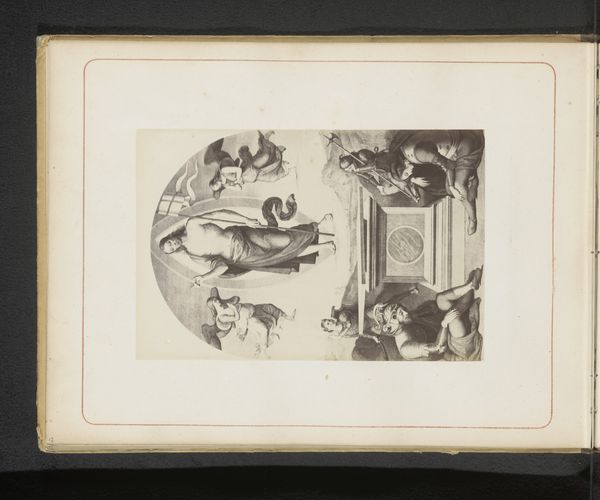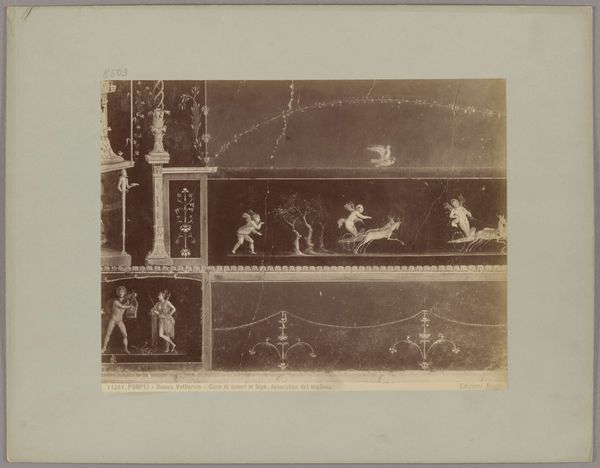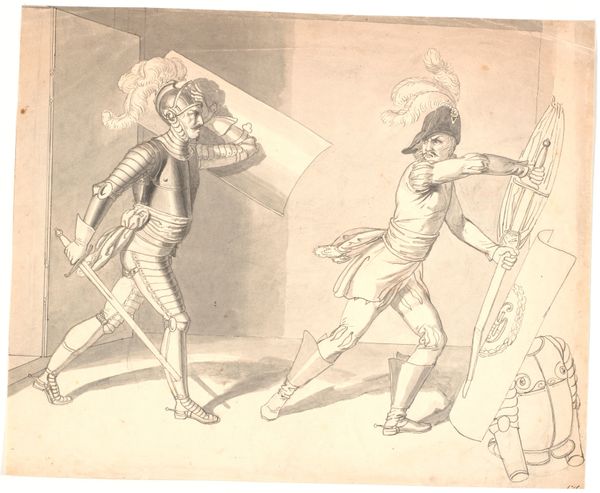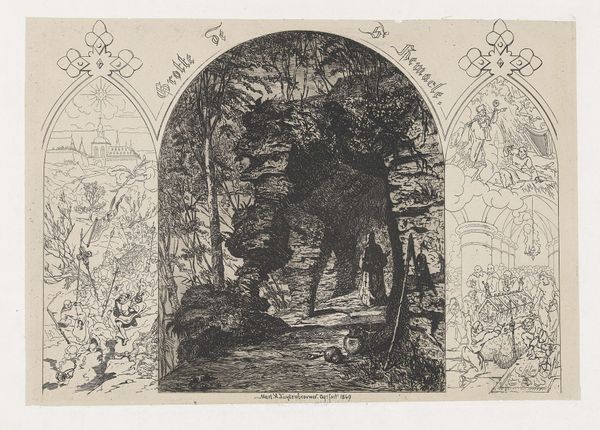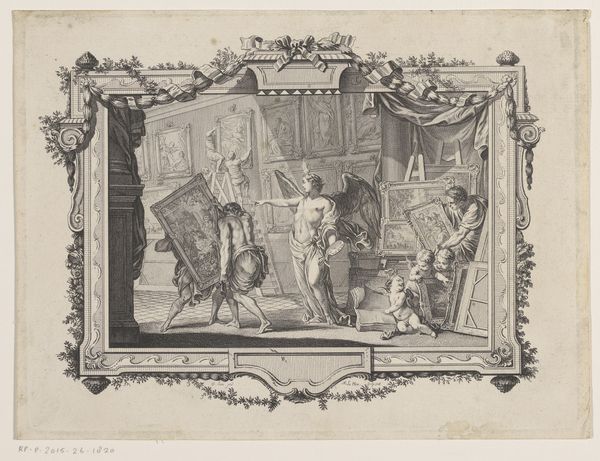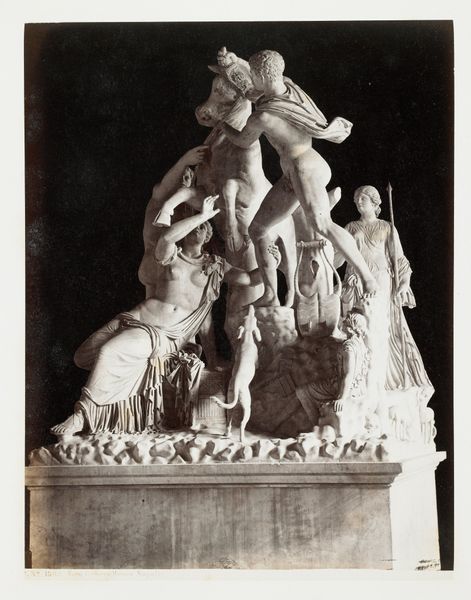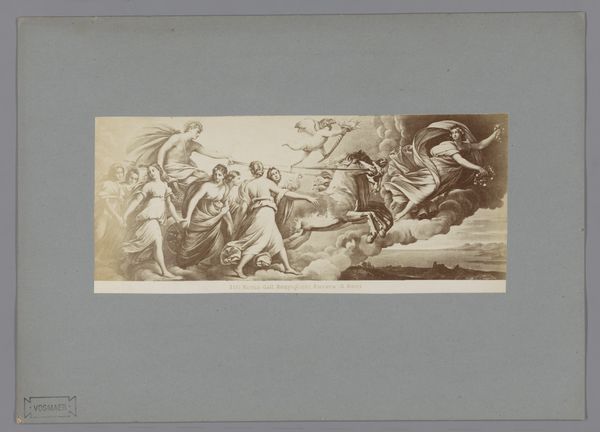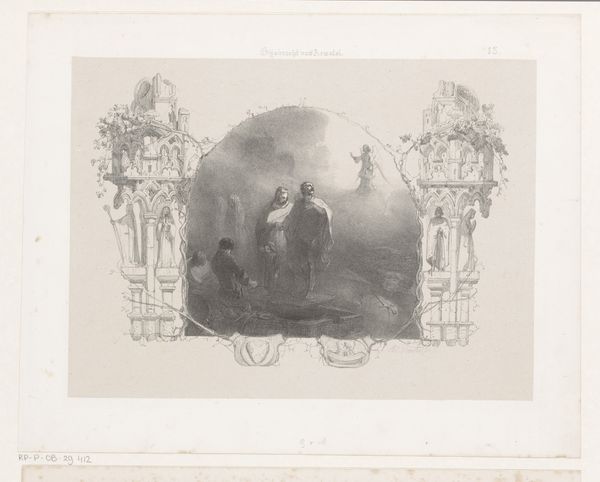
albumen-print, photography, albumen-print
#
albumen-print
#
landscape
#
caricature
#
classical-realism
#
figuration
#
photography
#
ancient-mediterranean
#
history-painting
#
nude
#
italy
#
albumen-print
Dimensions: 7 1/4 x 8 15/16 in. (18.42 x 22.7 cm) (image)
Copyright: Public Domain
Curator: Immediately striking is the chiaroscuro effect, particularly on the central figures, giving them a theatrical prominence. It almost reads as if they’re emerging from darkness itself. Editor: This is an albumen print from sometime in the 19th or early 20th century by Giorgio Sommer, currently titled "Untitled." What we are seeing is most likely a copy after an antiquity in Herculaneum, depicting perhaps Actaeon and Diana, though it is hard to know for sure as these tableaux are also assembled by studio photographers. Sommer’s establishment would have provided popular scenes from classical art, acting as a souvenir for tourists, or providing artworks to copy and use for academic studies. Curator: Note the contrast between the rough texture of the cave and the smoother rendering of the figures, creating a spatial depth that would seem very modern for the period if it wasn't for the obvious set design. And what is the artist attempting to express by framing the central action with seemingly random decorative objects such as these sculptures and wall adornments? Editor: They're hardly random. The objects around the central narrative are designed to enhance the classical and tasteful experience. These objects themselves may allude to aspects of Italian identity formation following the creation of Italy as a new nation state. Sommer was working at a time of massive investment in archeology. It is worth recalling the political potency of all this. Curator: The poses themselves seem contrived, staged rather than expressive of genuine emotional turmoil. The composition is deliberately invoking the visual language of Neoclassicism but in service to an aesthetic I am tempted to describe as pastiche. Editor: That assessment perhaps overlooks the commercial element here, Giorgio Sommer being a prominent photographer producing works to engage with a rising middle class. It should also be said the "souvenir" market, as we often call it dismissively, has done more to shape contemporary taste and access to art and photography than many museums or institutions. Curator: Still, I’m left feeling that the artifice of it all—the blatant staging, the almost caricatured dynamism—undercuts any serious engagement with the classical subject matter. This approach makes the subject appear rather unconsidered. Editor: I think you are judging the work by different metrics. To me, this speaks to a very precise and powerful moment in cultural history, when art, archeology, tourism and Italian cultural nationalism were merging together to produce what we might call visual experiences for a popular market. Curator: Indeed, and I am forced to see new angles myself on the historical context. Perhaps both the inherent artificiality and the classical themes merge perfectly in that market you suggest, capturing this historic blend with both purpose and accuracy. Editor: Precisely. Examining historical contexts can radically shift our understanding, helping us see this image as a window into the complex world of 19th-century art consumption and Italian nationalism.
Comments
No comments
Be the first to comment and join the conversation on the ultimate creative platform.
